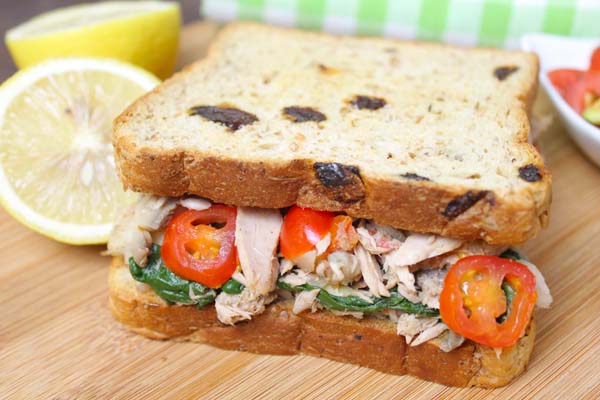Mind Your Heart
February marks the month of love and heart: a time to celebrate love with your special someone or just by yourself. In both cases, it is important that we know how to take care of our hearts so we would be able to share all the love that we could give.
As we all know, the human heart is an organ that pumps blood throughout the body through the circulatory system, supplying oxygen and nutrients to the tissues and removing carbon dioxide and other waste. If the heart is not able to perform these functions to the organs and tissues, all of these organs will waste away. So how do we take care of this key organ?
People with heart related sickness and those who have multiple risk factors for such diseases are usually advised to make a dietary and lifestyle modification to reduce their risk before resorting to medications. The US National Cholesterol Education Program (NCEP) – Adult Treatment Panel III has set up a recommended approach to reduce the risk of heart disease which is called Therapeutic Lifestyle Changes (TLC). The main features of TLC include a cholesterol and saturated fat -controlled diet, regular physical activity, and weight reduction.
Reducing Risk of Heart Disease though Therapeutic Lifestyle Changes (TLC)
- Lifestyle Choices
- Spend at least 30 minutes of moderate-intensity endurance activity on most days of the week. The goal is to have an energy expenditure of at least 2000 calories weekly.
- Exposure to any form of tobacco smoke should be minimized.
- Weight Reduction
- Weight reduction may improve other heart disease risk factors. The general goal is to prevent weight gain, reduce weight if necessary, and maintain the ideal body weight over the long term.
- A healthy weight loss/weight gain is 1-2 pounds per week.
- Dietary Strategies
- Limit saturated fat to less than 7% of total calories and cholesterol to less than 200 milligrams a day. Maintaining a fat intake that is 25-35% of total calories may help with this goal. Consult with a nutritionist for more specific details.
- Avoid food products that contains trans-fat. You can check this out with the labels and ingredients list. If you see “partially hydrogenated vegetable oil” on the list, there’s your red flag.
- Lessen intake of fats coming from animal sources (e.g lard, butter, bacon) and choose fats from plant sources (e.g. avocado, olive oil, canola oil) instead.
- If alcohol is consumed, it should be limited to one drink per day only for women and two drinks per day for men.
- To reduce blood pressure, choose a diet that is high in fruits and vegetables, low-fat milk products, nuts, and whole grains. Plus, limit your intake of salty foods (not more than 2 tsp of salt per day)
- Replace saturated fats with carbohydrates from whole grains, legumes, fruits, and vegetables or with unsaturated fats from fish, vegetable oils, and nuts.
- Choose foods high in soluble fiber such as oats, barley, beans, and fruit. Soluble fiber helps lower your bad cholesterol
Gardenia offers a wide variety of breads that everyone can enjoy. Not only does it smell and taste good, it is also super-packed with nutrients, vitamins, minerals, and fiber! Among all Gardenia breads, Gardenia High Fiber Wheat Raisin Loaf contains the highest amount of fiber, providing you with 29% of your daily Fiber requirement in just one slice. It is high in soluble fiber which helps in lowering bad cholesterol and total cholesterol therefore reducing the risk of heart disease.
You may also try Gardenia Wheat Cranberry Loaf as it is a good source of folate (provides 29% of daily folate requirement in just one serving). Based on studies, low levels of folate is associated with high level of homocysteine in the blood. Homocysteine is an amino acid wherein a high level of it is linked to the early development of heart disease. To further enjoy these deliciously healthy breads, you may try this recipe: Gardenia Mushy Tuna Sandwich.

So if you haven’t been treating your heart with tender, loving care, this is the perfect moment to start. Let’s make it our goal to keep our hearts happy and healthy through proper nutrition and healthy lifestyle. Why not start by giving your heart some TLC: therapeutic lifestyle change, not only during this valentine season but all throughout the year. Eat healthy and spread the love!
Sources:
Rolfes, S.R., Pinna, K., Whitney, E.N., Understanding Normal and Clinical Nutrition 7th edition. 2006. Page 825-833
http://www.webmd.com/heart-disease/guide/homocysteine-risk accessed January 25, 2017
http://www.uccs.edu/Documents/healthcircle/pnc/health-topics/Soluble_Insoluble_Fiber.pdf accessed January 25, 2017
http://www.mayoclinic.org/healthy-lifestyle/nutrition-and-healthy-eating/in-depth/fiber/art-20043983 January 25, 2017